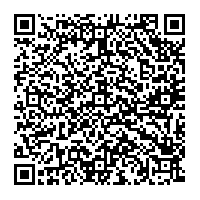Fat Freezing Treatment in Pakistan
Fat freezing, also known as cryolipolysis, is a non-invasive cosmetic treatment used to reduce stubborn fat pockets in various areas of the body. It works by using controlled cooling to freeze and destroy fat cells, which are then naturally eliminated from the body through the lymphatic system.
During the treatment, a special device is placed on the targeted area, which then cools the fat cells beneath the skin to a temperature that triggers their natural death. The surrounding skin and tissues are left unharmed, and the destroyed fat cells are gradually removed from the body over a period of weeks to months following the procedure.
Treatable Areas in Fat Freezing Treatment
Some of the most common areas that can be treated with fat freezing include:
Abdomen: The lower and upper abdomen can both be targeted for fat reduction with fat freezing.
Flanks: Fat freezing can reduce the appearance of love handles or muffin tops around the waistline.
Thighs: Both the inner and outer thighs can be treated with fat freezing.
Upper arms: Fat freezing can help to reduce excess fat in the upper arms, also known as "bat wings".
Chin: Fat freezing can be used to target a double chin, reducing the appearance of a sagging jawline.
Back: Fat freezing can be used to target excess fat in the back area.
Common Side Effects of Fat Freezing Treatment
Like any medical procedure, fat freezing, or cryolipolysis, may have some potential side effects. However, most of these side effects are minor and temporary, and they typically resolve on their own within a few days or weeks following the treatment. Some common side effects of fat freezing include:
Redness or bruising: The treated area may appear red or bruised for a few days after the procedure. This is a normal reaction to the cooling process and should resolve on its own.
Swelling: Some mild swelling may occur in the treated area, which can last for several days following the procedure.
Numbness or tingling: The treated area may feel numb or tingly for several weeks following the treatment. This is a normal reaction to the freezing process and should resolve on its own.
Soreness or tenderness: Some mild soreness or tenderness may occur in the treated area, which can last for several days following the procedure.
Itching: Some patients may experience mild itching in the treated area as the fat cells are eliminated from the body.
Skin sensitivity: In rare cases, some patients may experience increased skin sensitivity in the treated area following the procedure.
Advantages of Fat Freezing Treatment in Pakistan
There are several advantages of fat freezing, or cryolipolysis, as a non-invasive method of reducing stubborn fat pockets. Some of the main advantages include:
Non-invasive: Fat freezing is a non-invasive procedure, meaning that it does not require any incisions, injections, or anesthesia. This makes it a safer and less painful alternative to surgical fat reduction methods.
Minimal downtime: Since fat freezing is a non-invasive procedure, there is little to no downtime required after the treatment. Most patients can resume their normal activities immediately following the procedure.
Targeted fat reduction: Fat freezing is a targeted method of fat reduction, meaning that it can be used to specifically target stubborn fat pockets in certain areas of the body.
Natural results: The results of fat freezing are gradual and natural-looking, giving patients a more toned and sculpted appearance without the need for invasive surgery or downtime.
Long-lasting results: Once fat cells are destroyed through fat freezing, they are eliminated from the body and cannot return. This means that the results of fat freezing can be long-lasting with proper diet and exercise.
Safe and effective: Fat freezing is a safe and effective method of non-surgical fat reduction, with minimal risk of serious side effects when performed by a qualified healthcare professional.
The Procedure of Fat Freezing Treatment
The fat freezing, or cryolipolysis, a procedure typically involves the following steps:
Consultation: The first step is to schedule a consultation with a qualified healthcare professional who will assess your individual needs and determine if you are a suitable candidate for fat-freezing treatment.
Preparation: On the day of the procedure, the targeted area will be marked and a special gel pad will be applied to protect the skin during the treatment.
Cooling: The fat freezing device will be applied to the targeted area, and controlled cooling will be used to freeze the fat cells beneath the skin. The treatment typically lasts for 35-60 minutes, depending on the area being treated.
Massage: After the cooling process is complete, the healthcare professional will perform a massage or vibration on the treated area to help break up the frozen fat cells and enhance the results of the treatment.
Recovery: There is little to no downtime required after the procedure, and most patients can resume their normal activities immediately following the treatment. Some mild redness, swelling, and bruising may occur in the treated area, but this typically resolves on its own within a few days.
Results: Over the weeks and months following the procedure, the destroyed fat cells are gradually eliminated from the body through the lymphatic system, resulting in a more toned and sculpted appearance in the treated area.


